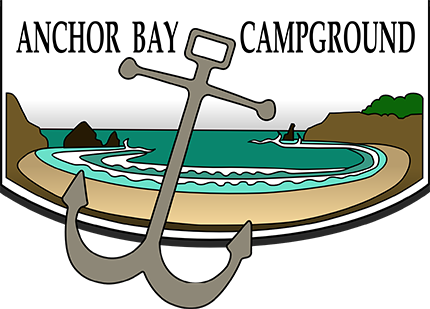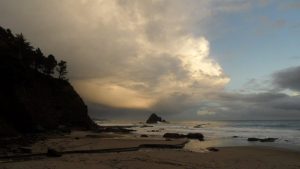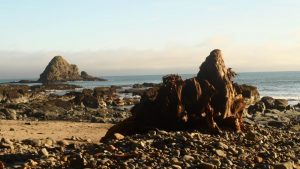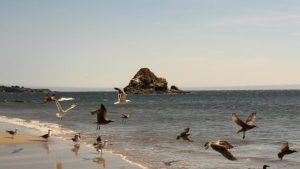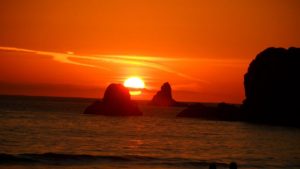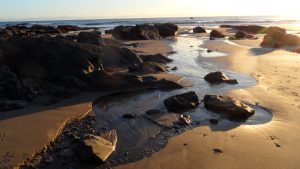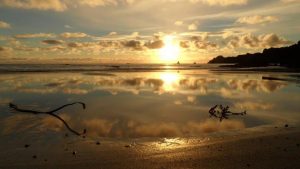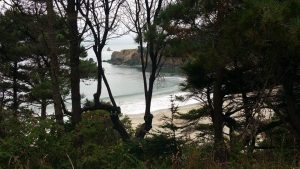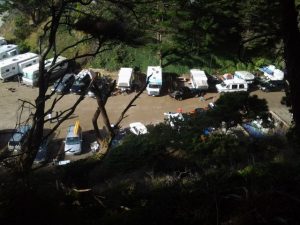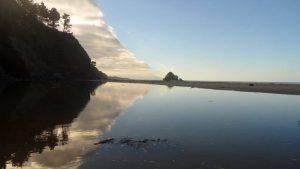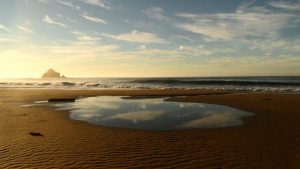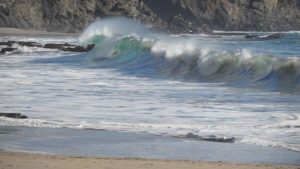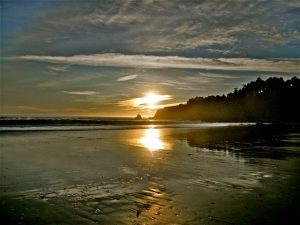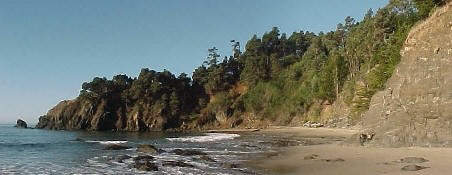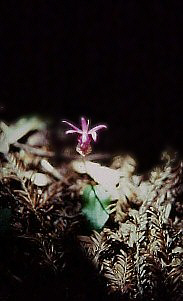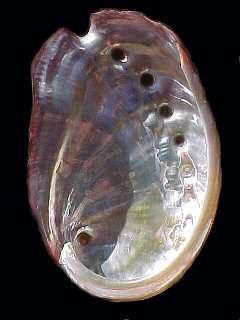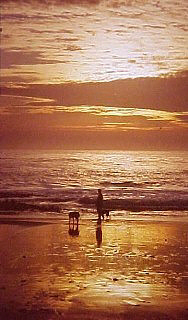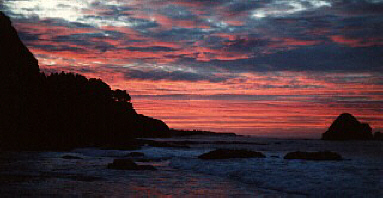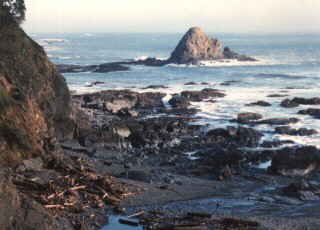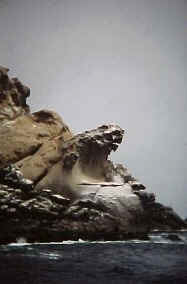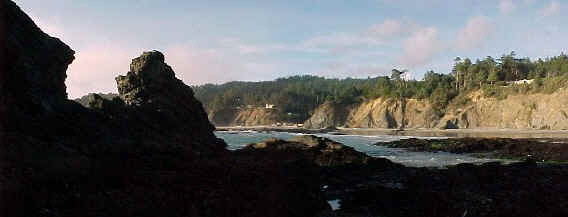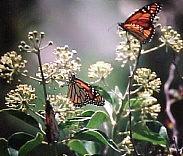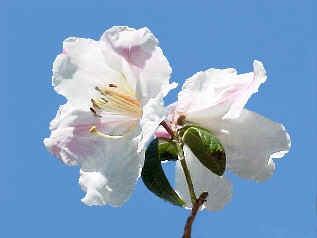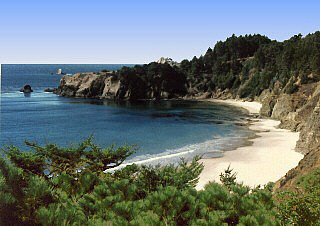
Anchor Bay Beach, officially “Fish Rock Beach,” viewed from the top of the trail to town. The farthest end is known locally as “Chicken Cove” and is where most of the boat launching of the smaller car tops and inflatables takes place. Learn about fishing Anchor Bay style. In the mid-to-late 1800s timber products from the surrounding forests were loaded onto closely moored schooners by means of a slide or apron chute. Our History Page has the story.
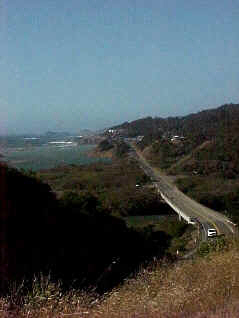
Sonoma & Mendocino County Line is the Gualala River. A bridge crosses over and Highway One enters the “Redwood Coast” at the town of Gualala. Anchor Bay is just 4 more miles north.

Big Rocks tower over your head on the winter beach, rocks that are buried by summer’s deep sand. Look for Jennie in the photo. The summer sand level is two feet above her head.
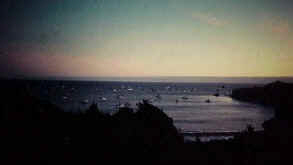
The Anchorage at Anchor Bay. One July night we saw 175 fishing boats anchored. Now that salmon are fewer, we see only a few commercial boats in a whole season.

Fish Rock Creek exits the gulch beside the campground’s sea wall and often forms a small pond or lagoon. This is a favorite place for the younger kids to play. The sea wall has four of our most popular sites.
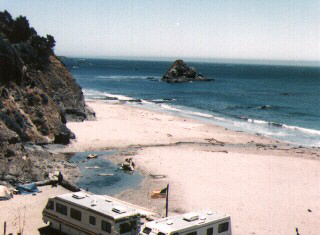
Sand In: Anchor Bay’s typical summer beach full of fluffy white sand. Anchor Bay Beach is a seasonal beach in that the sand shifts in or out according to the change in seasonal weather conditions.
